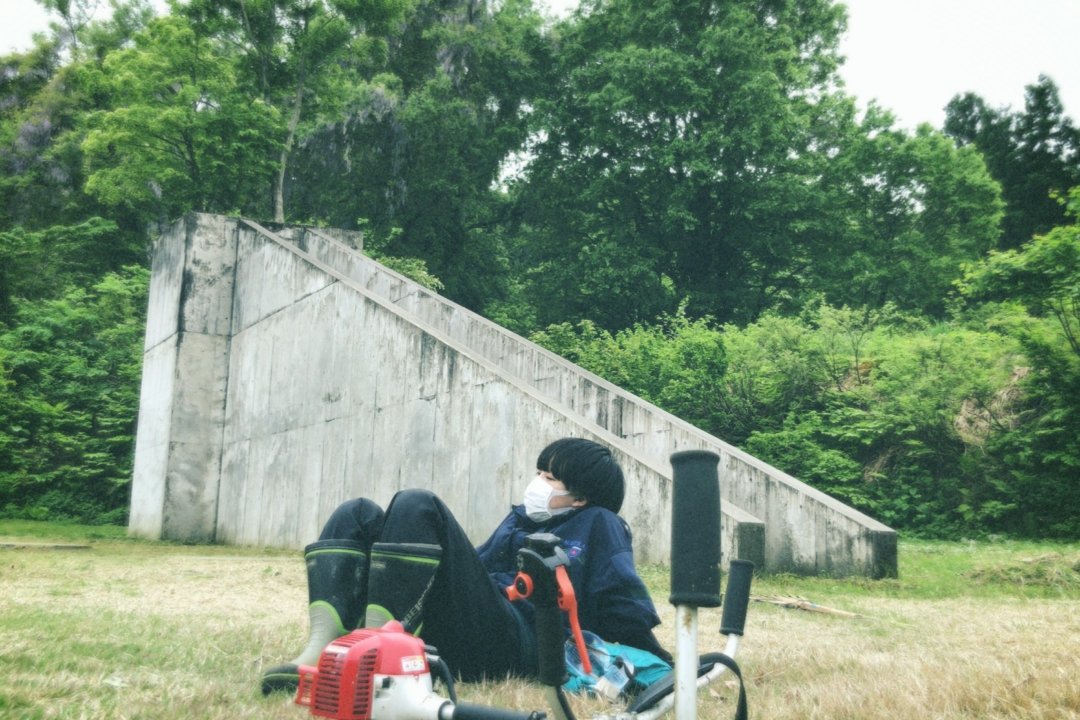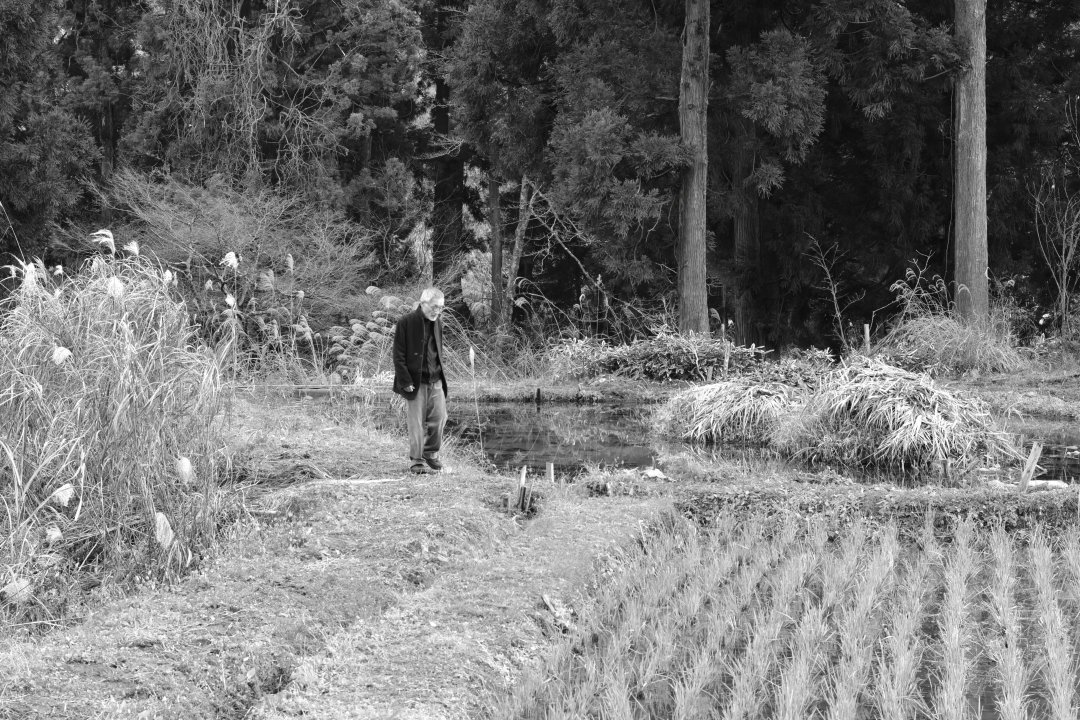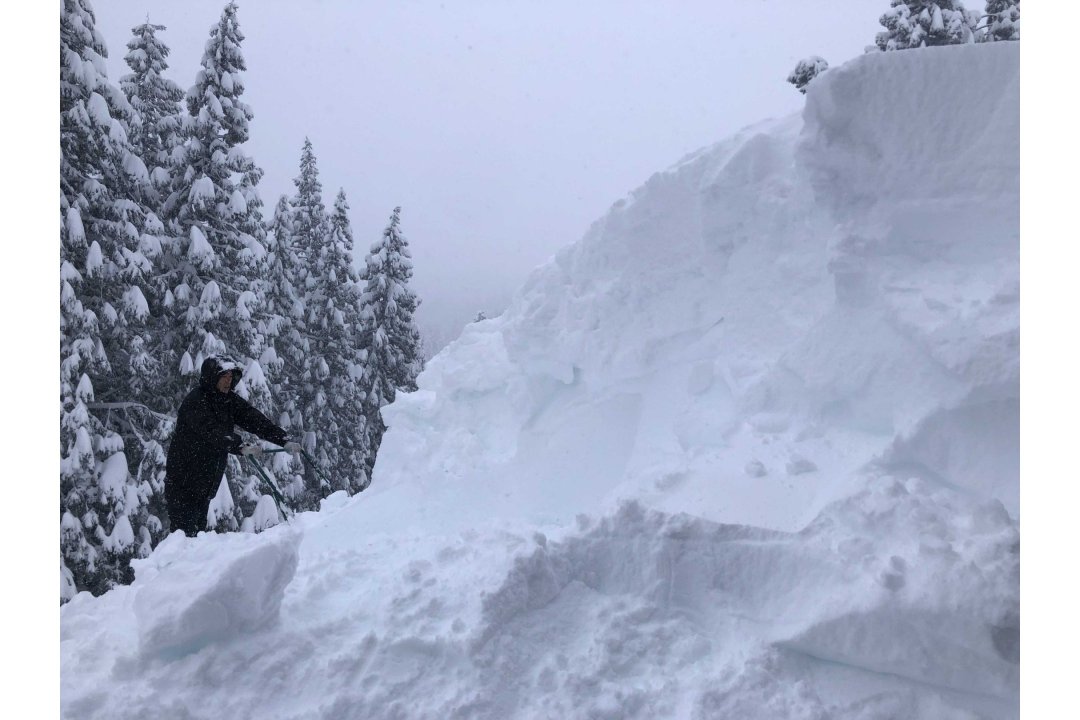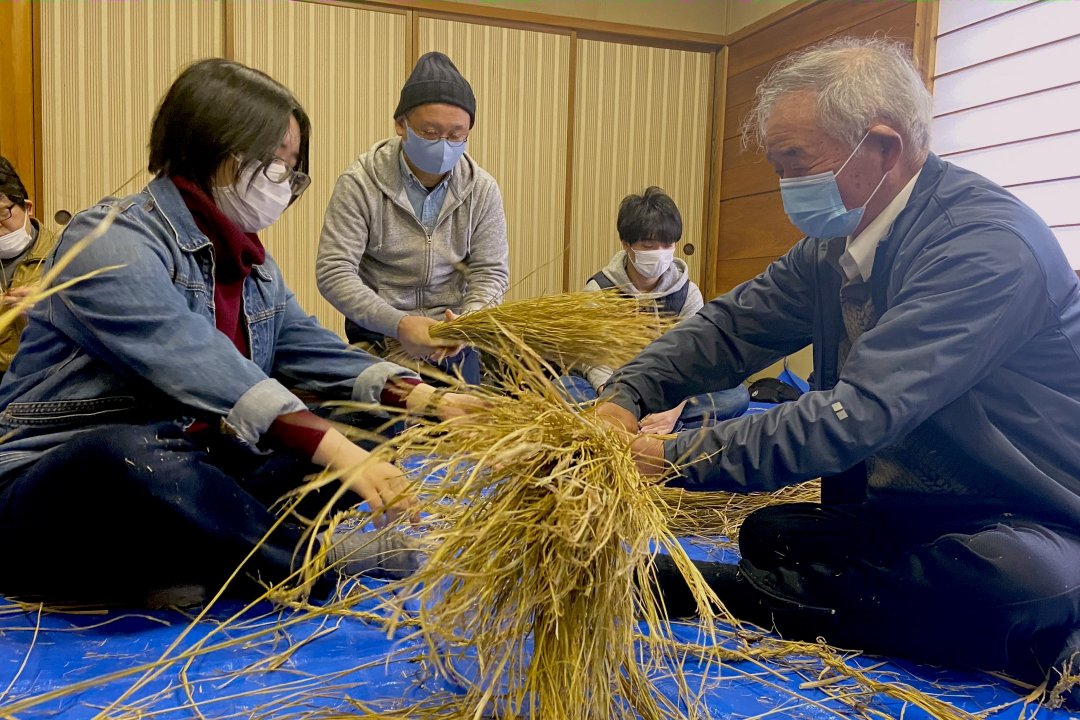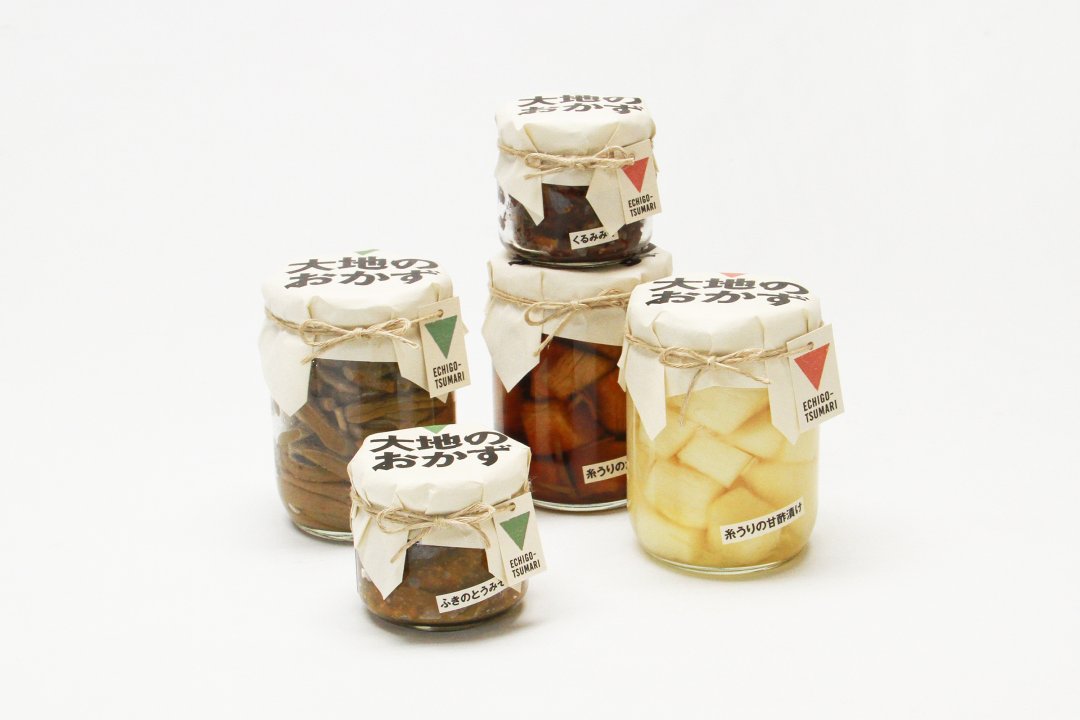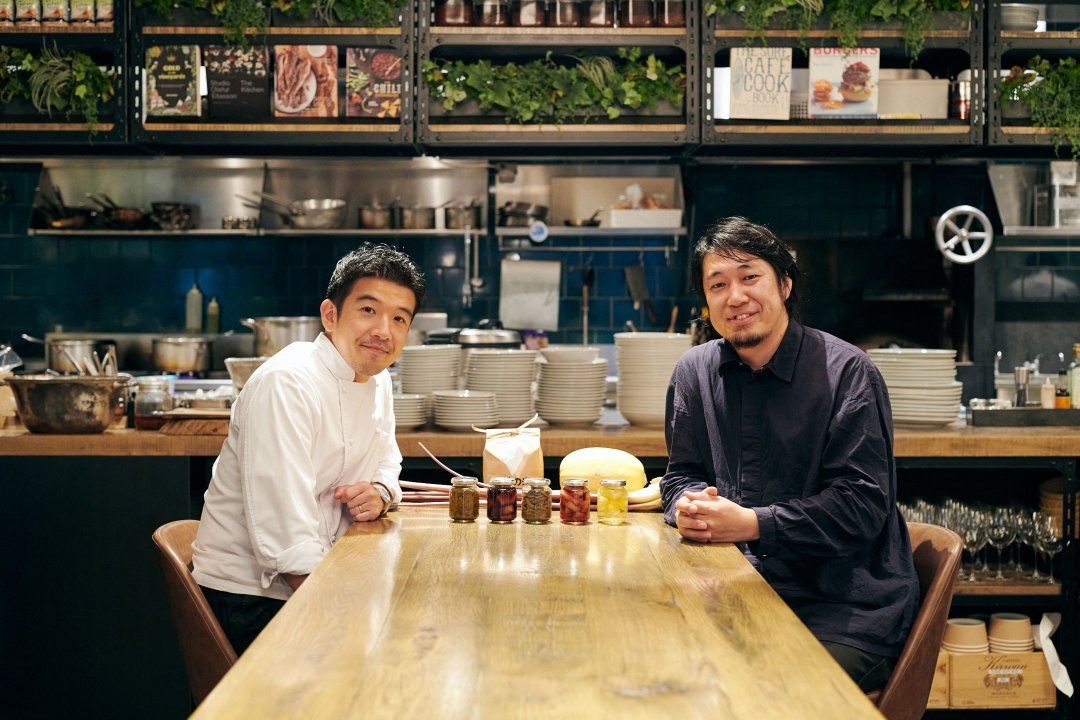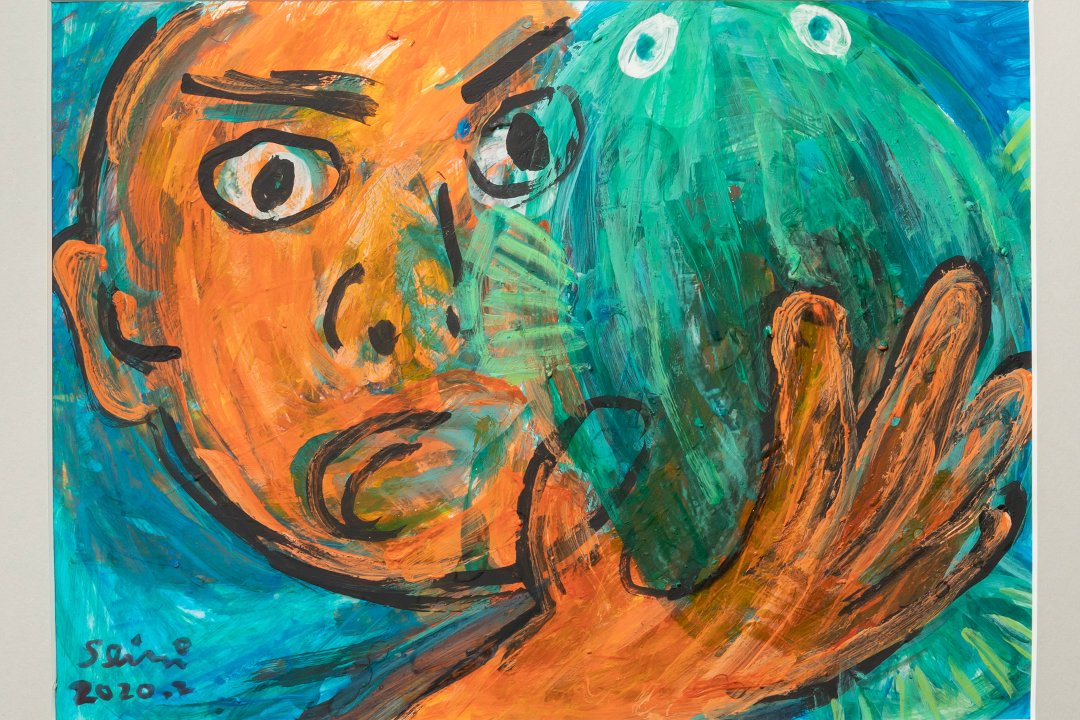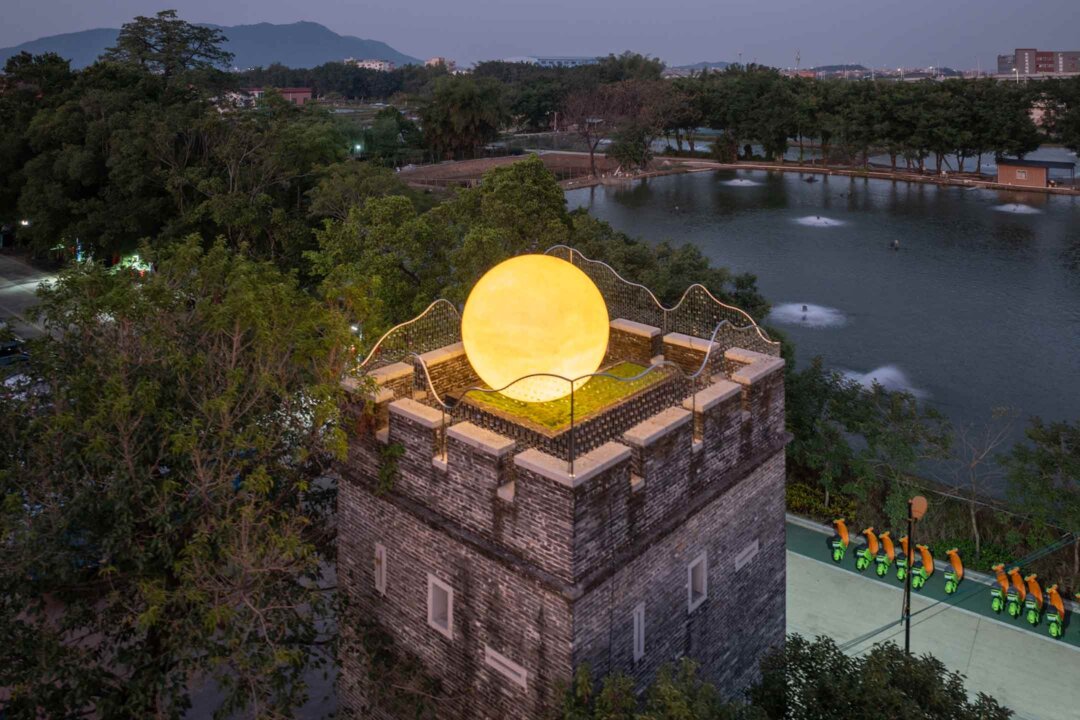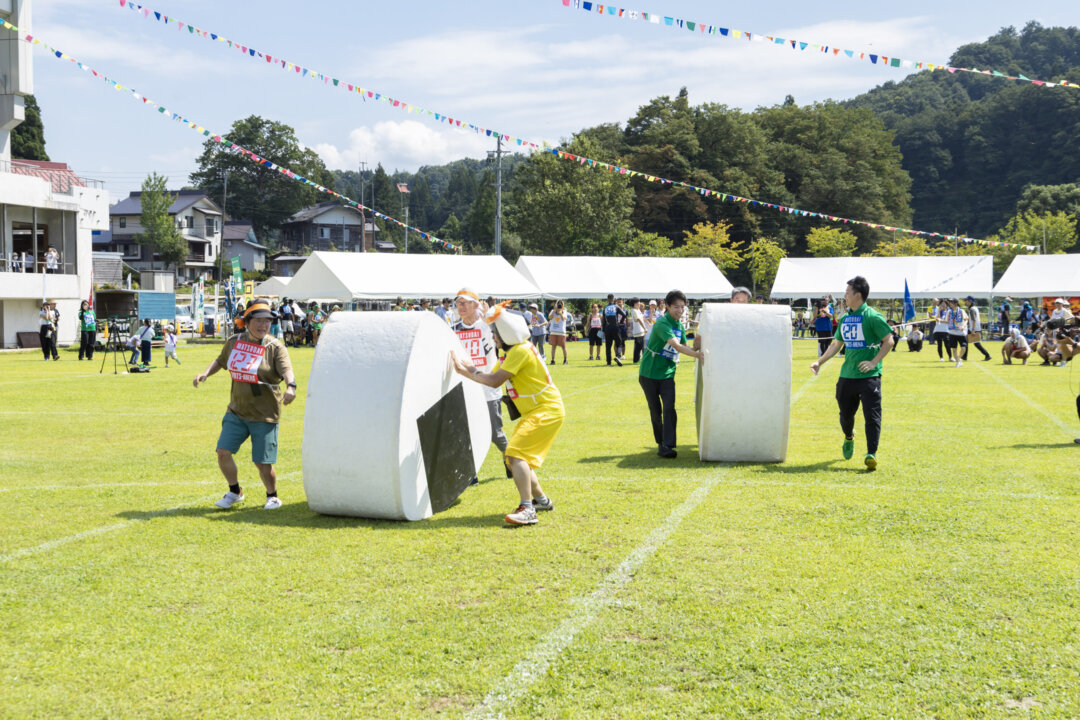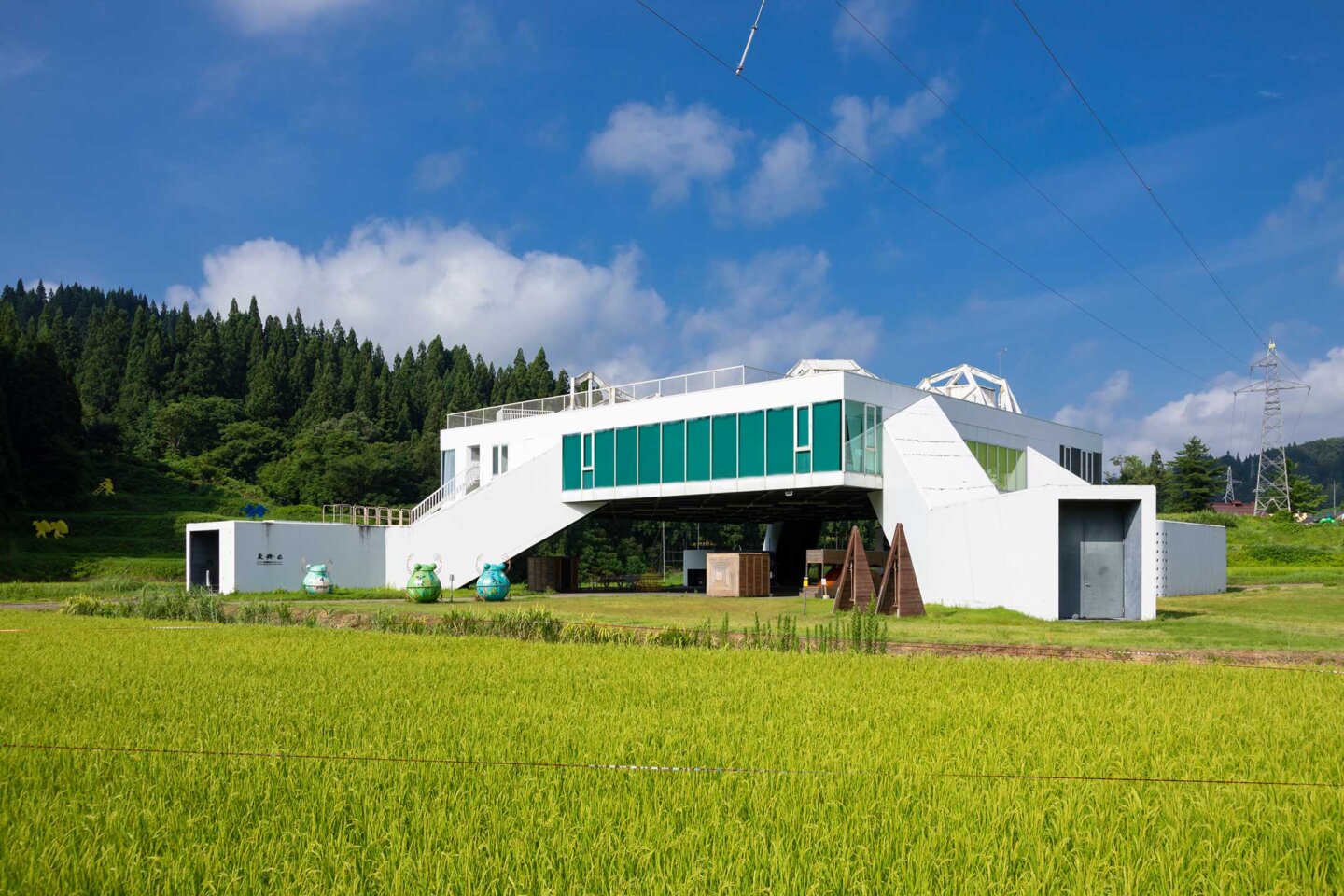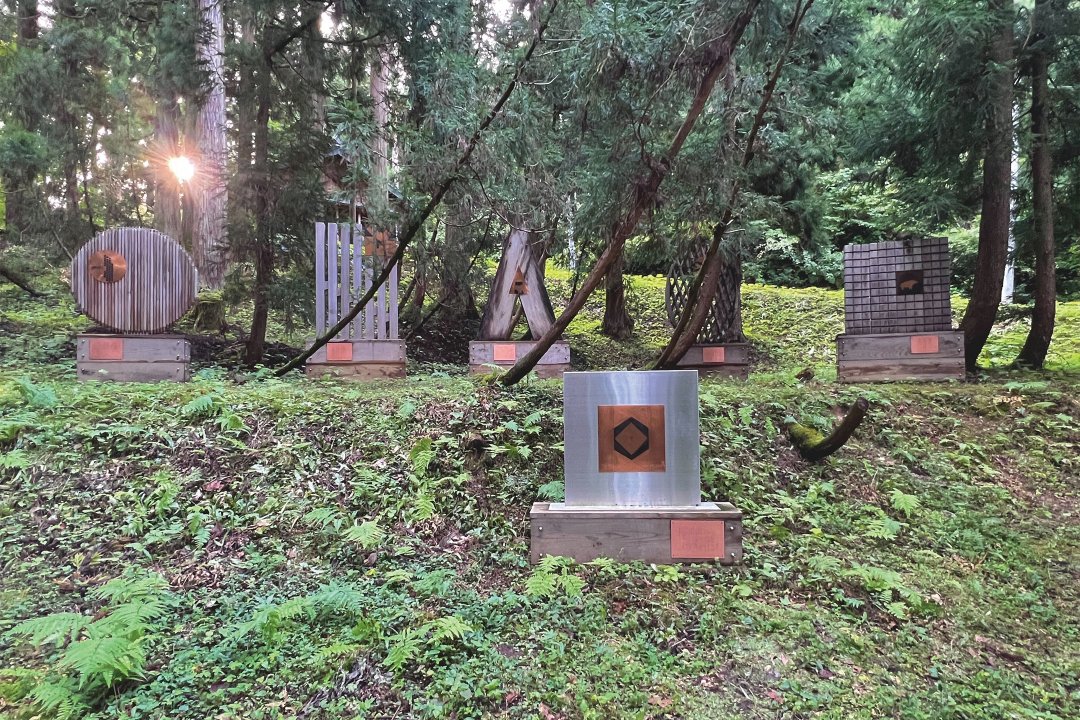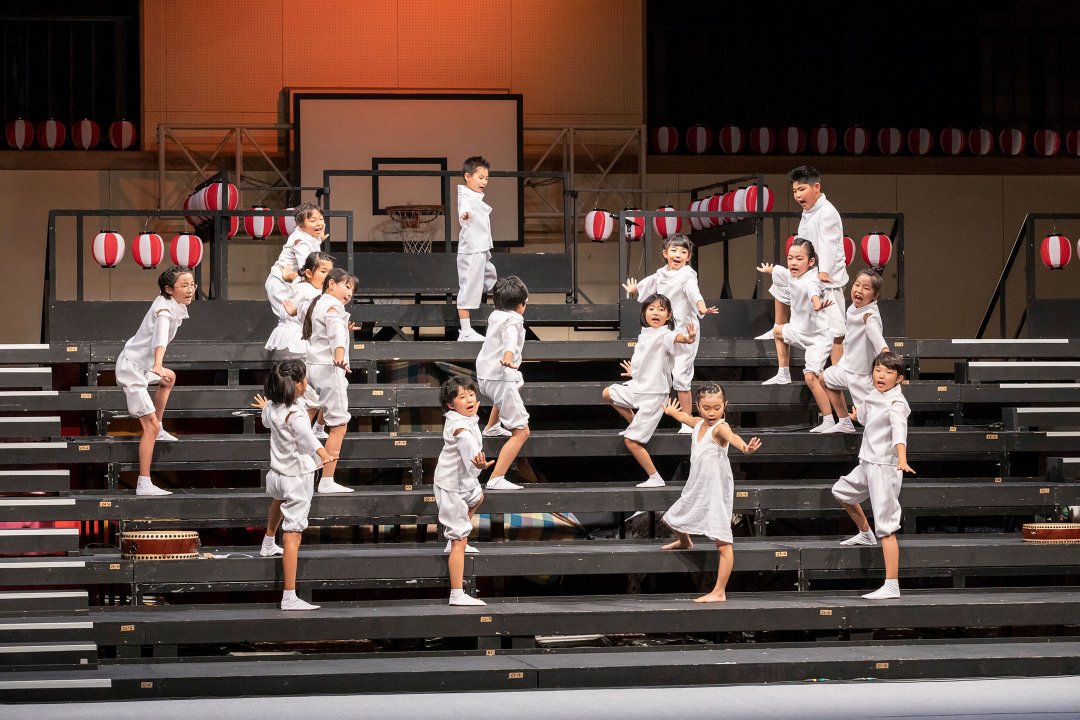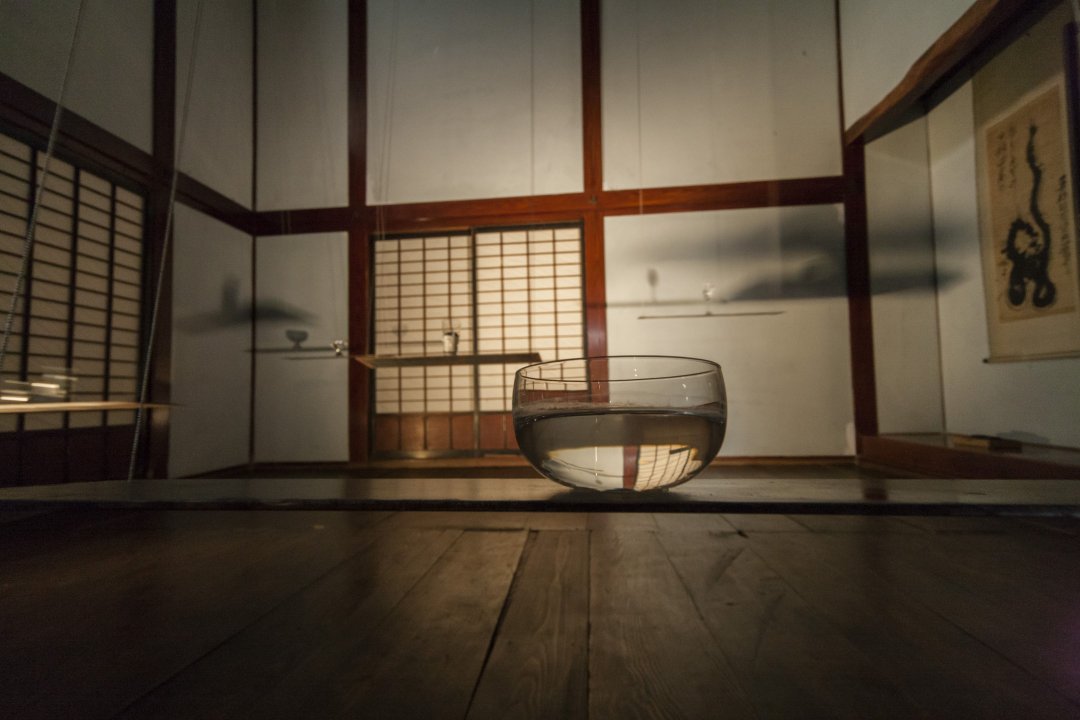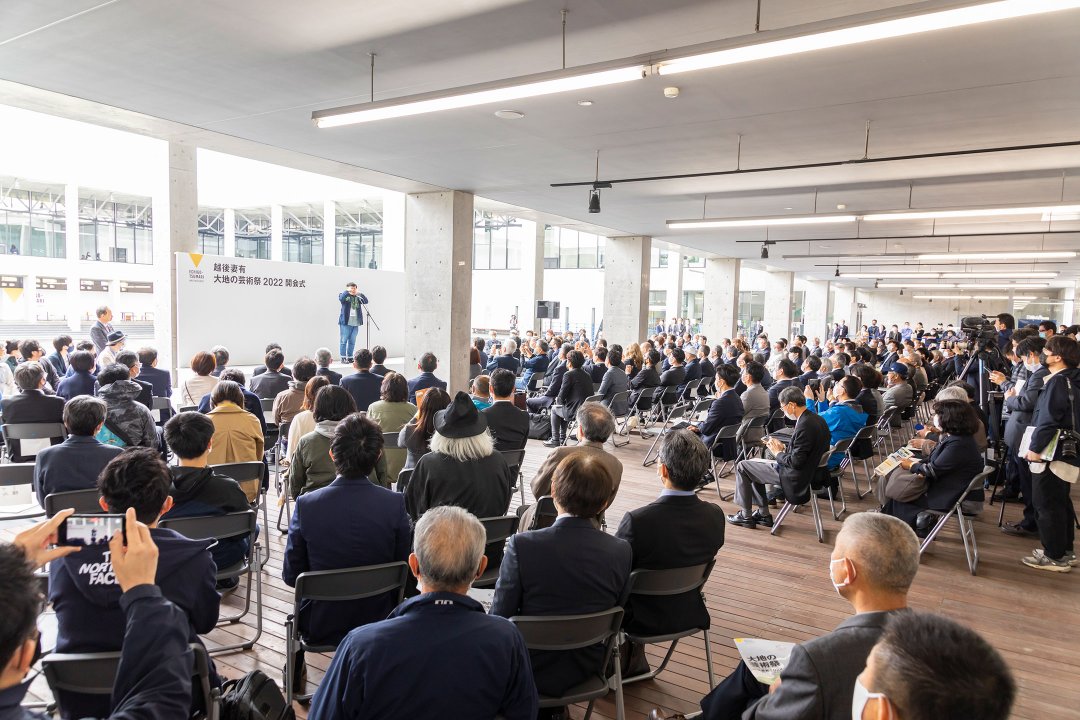Thinking 21st century art in the world from Niigata
Echigo-Tsumari Art Field - Official Web Magazine
Staff / From behind the scene of Echigo-Tsumari
"Gift for Frozen Village" by Takahashi Kyota, artist of light: Ten years of his history facing snow in Echigo-Tsumari
24 February 2020
Launched in the winter of 2011, "Gift for Frozen Village" is known as "flower field of light". Regarding the snow field as flower bed, volunteers and visitors plant 30,000 of "seeds of light" in different colours in the snow field to bring a one-night only flower filed of light. As we celebrate the 10th anniversary this year, we have invited the artist, Takahashi Kyota to tell us about the artwork.
Q. Your works use "light" as a theme, what made you interested in light in the first place?
If I look back I was influenced by my family and the environment in which I was born and raised.
I have a found memory of my grandfather. He was a photographer and we had a room for developing photos at home. Being a grandchild, I was the only person allowed in the dark room. I was able to entre into the dark room after going through the thick layers of dark curtains after hearing “come in” as I knocked on the door. The room was completely dark and then turned into red. I liked the moment when images emerged from photos in the developer. I thought it was like a magic.
Another thing I can think of is a memory of my mother. She worked at a Noh theatre in Kyoto and I watched Noh plays from the anouncer booth since I was little. The Noh stage appeared in the dark theatre. I was always thrilled with that moment even though I didn’t understand the content of the play.
I bet I like dark place (grinning). I love the moment when light emerges in the darkness. I liked watching films since I was an elementary school student and I continued to be enthusiastic about films throughout my boyhood at junior and senior high schools. I spent a lot of time at cinemas and museums by myself as my parents were relaxed about me being absent from schools as long as I went to these places. In the cinema, I was taken to another world of a film as it was projected onto a screen after a moment of complete silence. That was beautiful. What a brilliant moment it was.
The reason why I wanted to go to an art university (Kyoto City University of Arts) was because I wanted to find a job in the fields of film or theatre. I even visited a film director without an appointment and asked to take me as an assistant. The director said to me to calm down and suggested to consider going to an art university to expand my horizon. He even told me that my parents would be sad if I joined such a yakuza world.
In the end, I became an artist and doing yakuza business (grinning). I think I made the right decision of going to the art university.
As spoke, I was always wanted to study about theatre and films even though I entred into the sculpture course at the university. To some extent I knew exactly which direction I wanted to go.
It was the genru called temporal art which includes theatre, film and music. I chose to pursue light and illumination in particular.
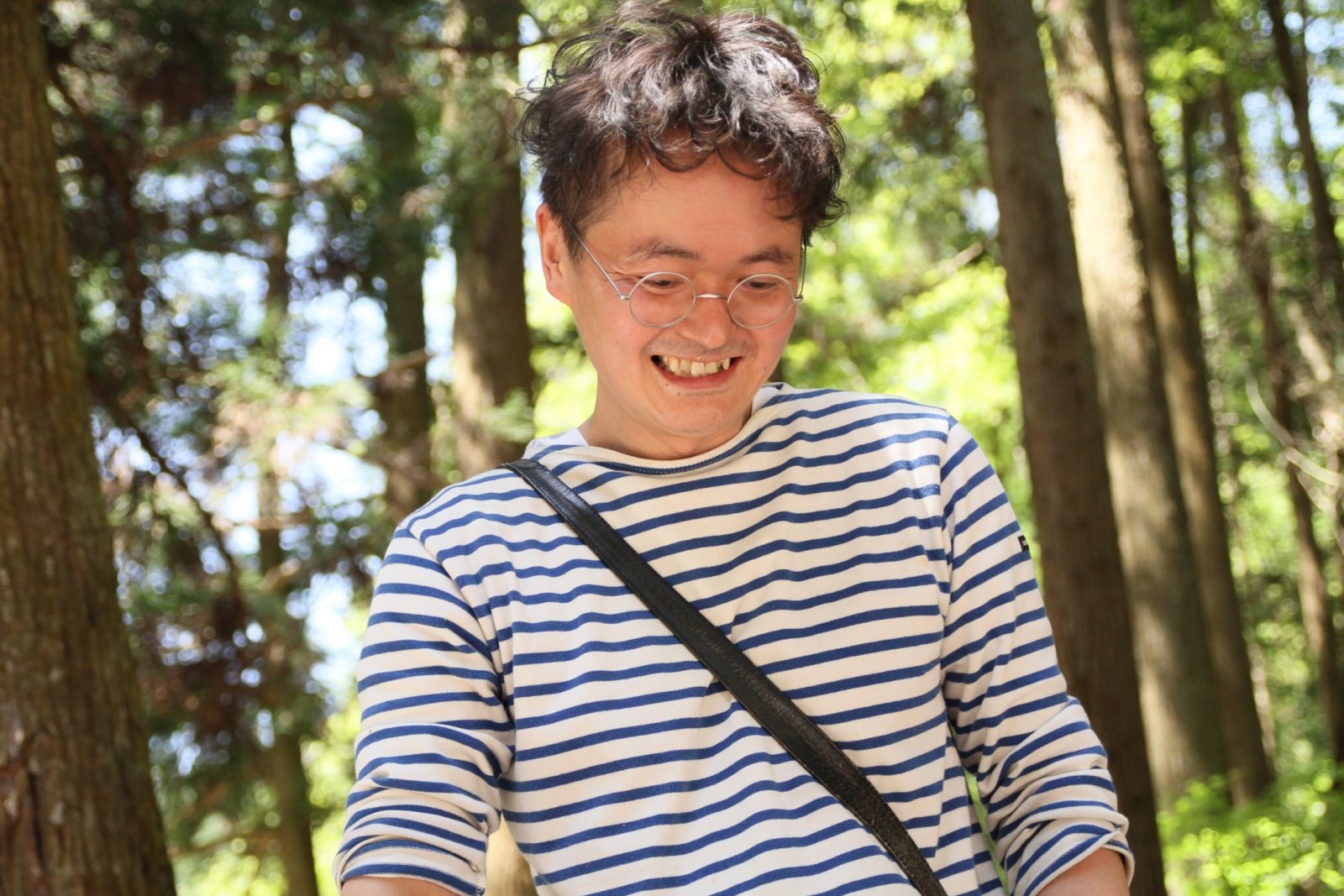
TAKAHASHI Kyota - known for his works of large-scale lighting installations
Q. Could you tell us how "Gift for Frozen Village" was born and its concept?
When Echigo-Tsumari has begun to be widely known for its art festivals in satoyama in summer around 2010, Fram (Kitagawa Fram, General Director of ETAT) invited me to think about an artwork under the themes of “winter” and “snow”. What I remember most from the conversation then was while “snow” for the local people was not something they regarded as beautiful but rather as menace of nature or troublesome, if I could review “snow” from an artist perspective with fresh eyes. I was born and grew up in Kyoto so I knew snow falling but it was never be a threat to me. I felt excited to see piled up snow and completely different landscape as I woke up in the morning when I was small. I enjoyed making a muddy snowman.
We thought we had to see in the first place and visited Matsudai in Jaunary. We had no idea so we drove a light duty car with TWD. We had such a struggle getting to Matsudai Nohbutai. We drove in and stuck in the snow wall. I suddenly felt a threat and we finally managed to get to the destination and ate warm meal at the restaurant. It was so delicious and we felt we came back to life. I truely realised “this is it. this is what human behaviour means”. What a bliss to have a warm room and meal to eat.
Even we had such a journey I, as an artist, couldn’t help thinking that snow was beautiful. I search for something beautiful. The beauty of snow lit up by the traffic light which was almost burried under the snow. Or the sound of snow falling in the stillness. I was so moved as if I was in the another world when I walked on the wet snow filed under the clear moon light.
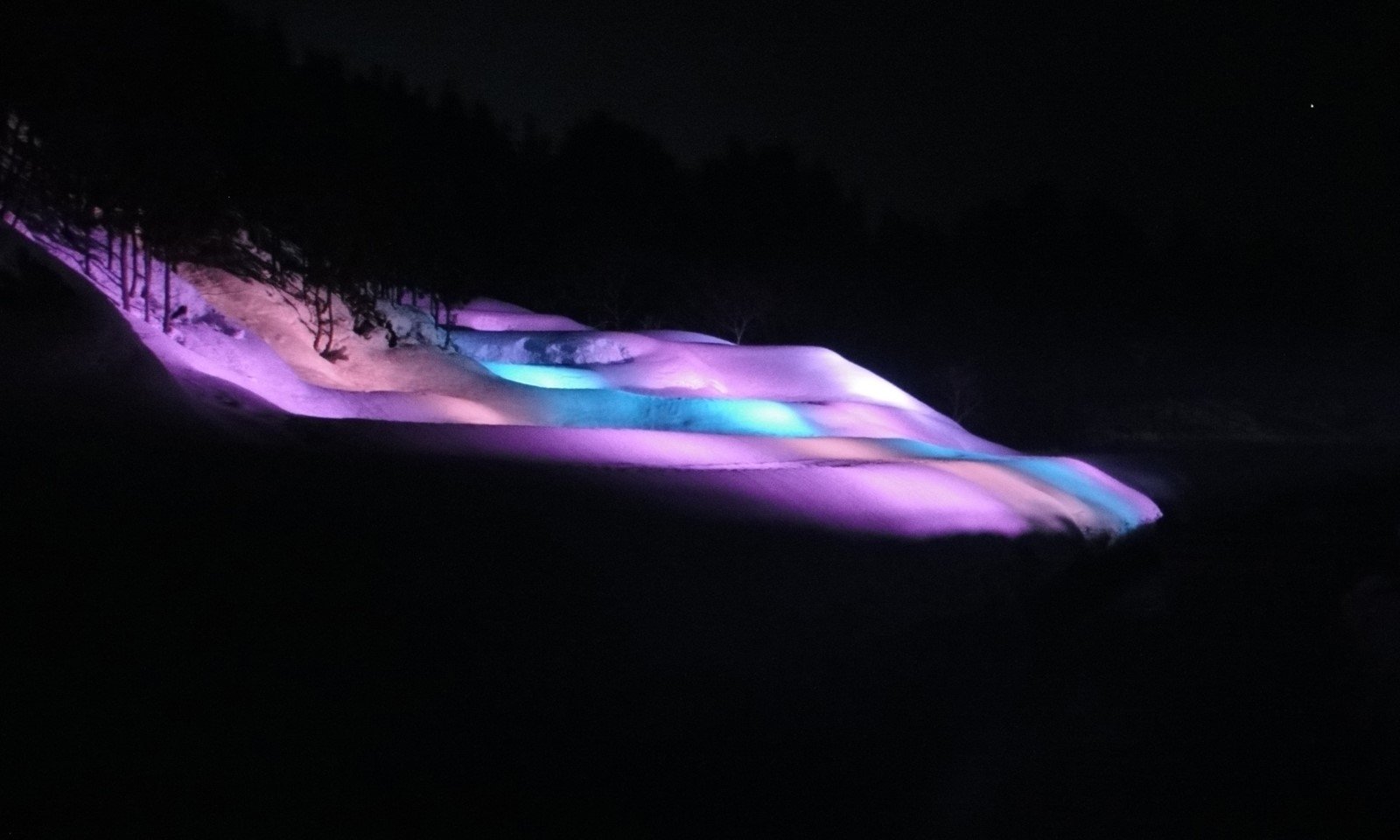
A special work for Echigo-Tsumari Art Field Snow Art Project (26 Feb 2011 around Matsudai Nohbutai) © Kyota Takahashi
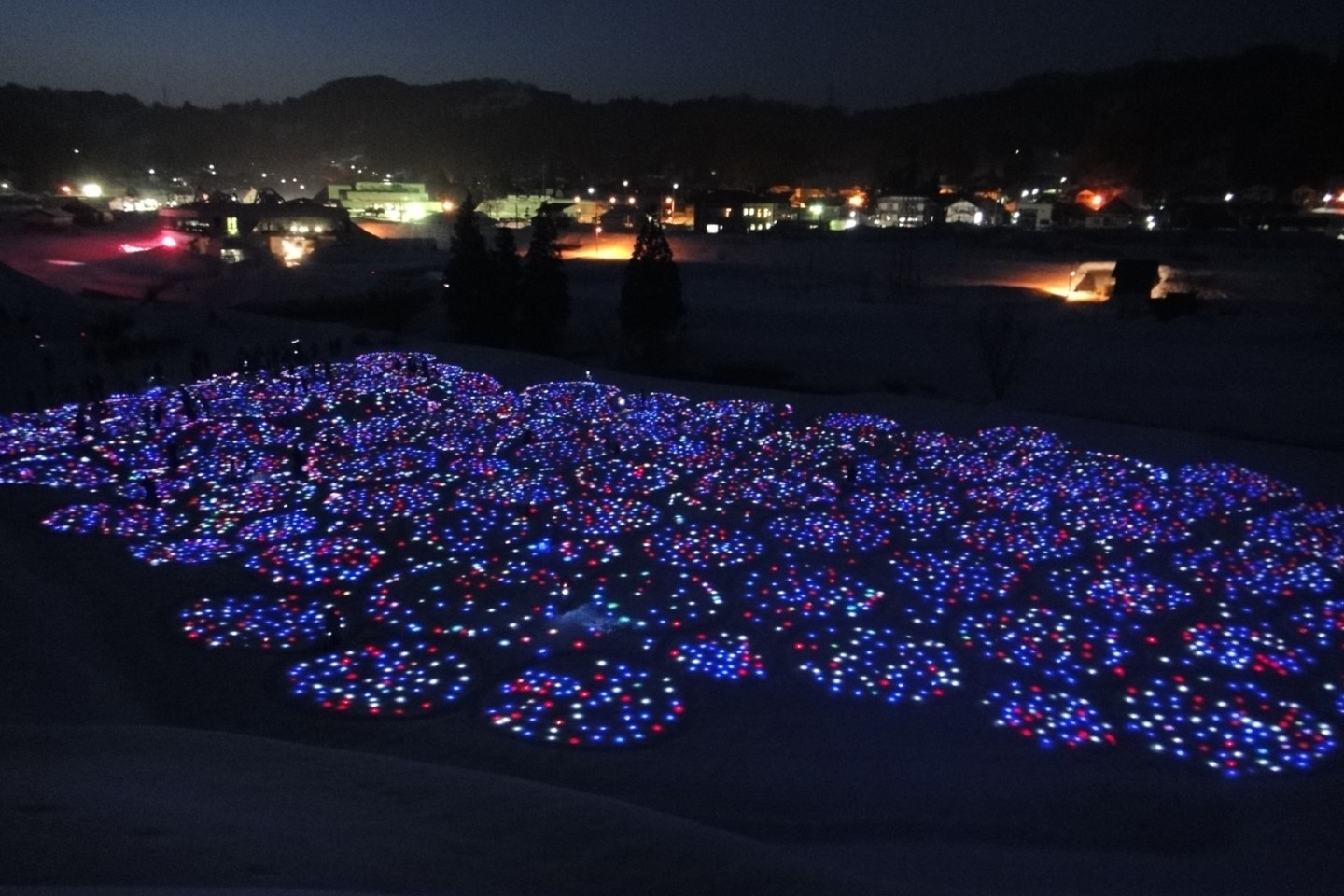
A special work for Echigo-Tsumari Art Field Snow Art Project (26 Feb 2011) Photo by Nakamura Osamu
If I may talk about something from the past, Fram-san told me that the local people (in Echigo-Tsumari) wait for spring as they plant seeds of flower in their garden. This must helped me come up with the theme of “Gift for Frozen Village”. What could I bring to frozen and colourless Matsudai in winter? It must be spring – wouldn’t it be so good if I could give a field filled with flowers? “flower field of light” was the outcome of the series of trial and error. In short, “flower field of light” is an artwork which responds to the overarching theme called “Gift for Frozen Village”.

A special work for Echigo-Tsumari Art Field Snow Art Project (25 Feb 2012, around Matsudai Nohbutai) Photo by Nakamura Osamu
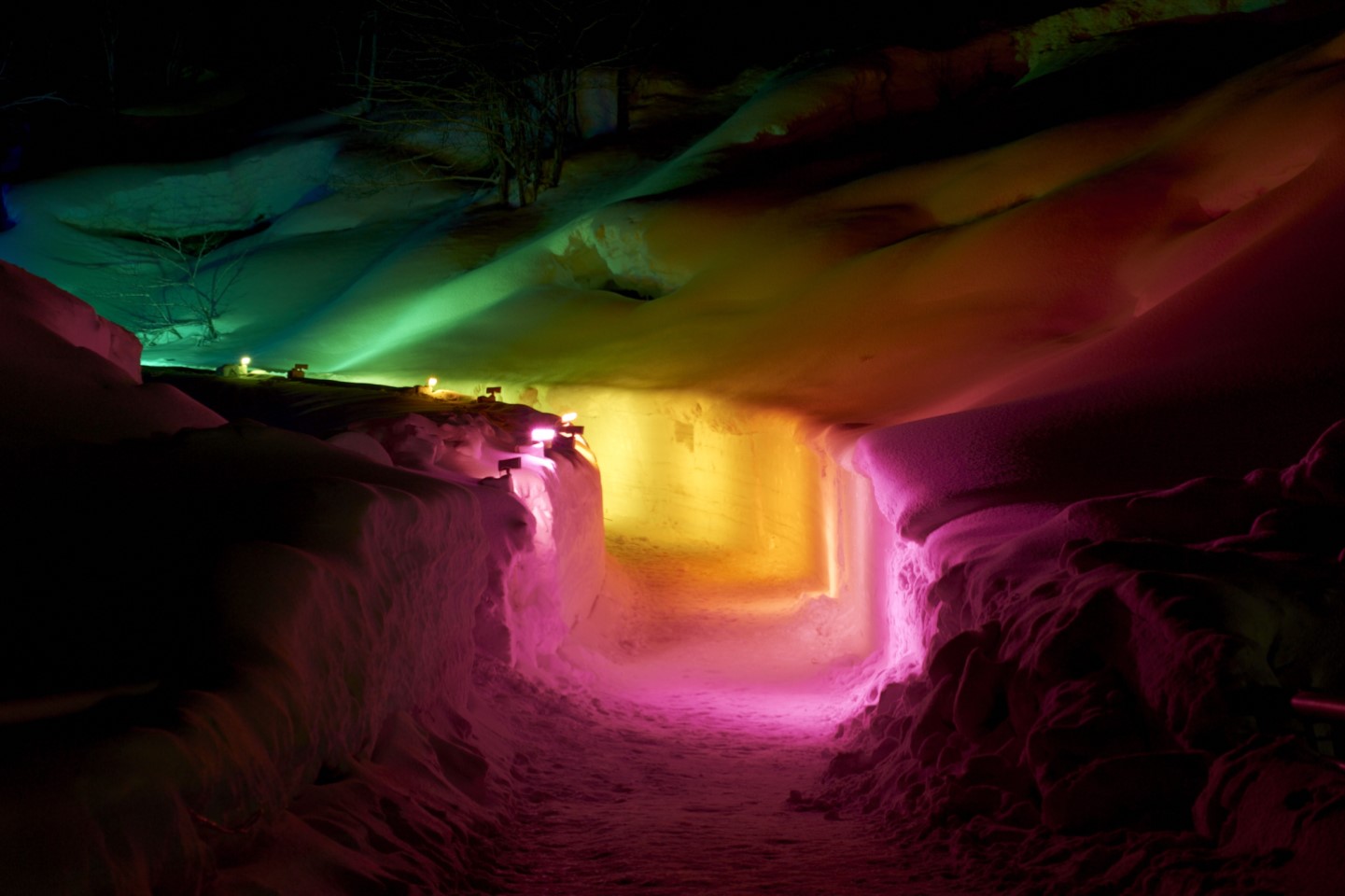
Echigo-Tsumari Snow Art Project 2013 (2 Mar 2013, around Matsudai Nohbutai) ©Kyota Takahashi
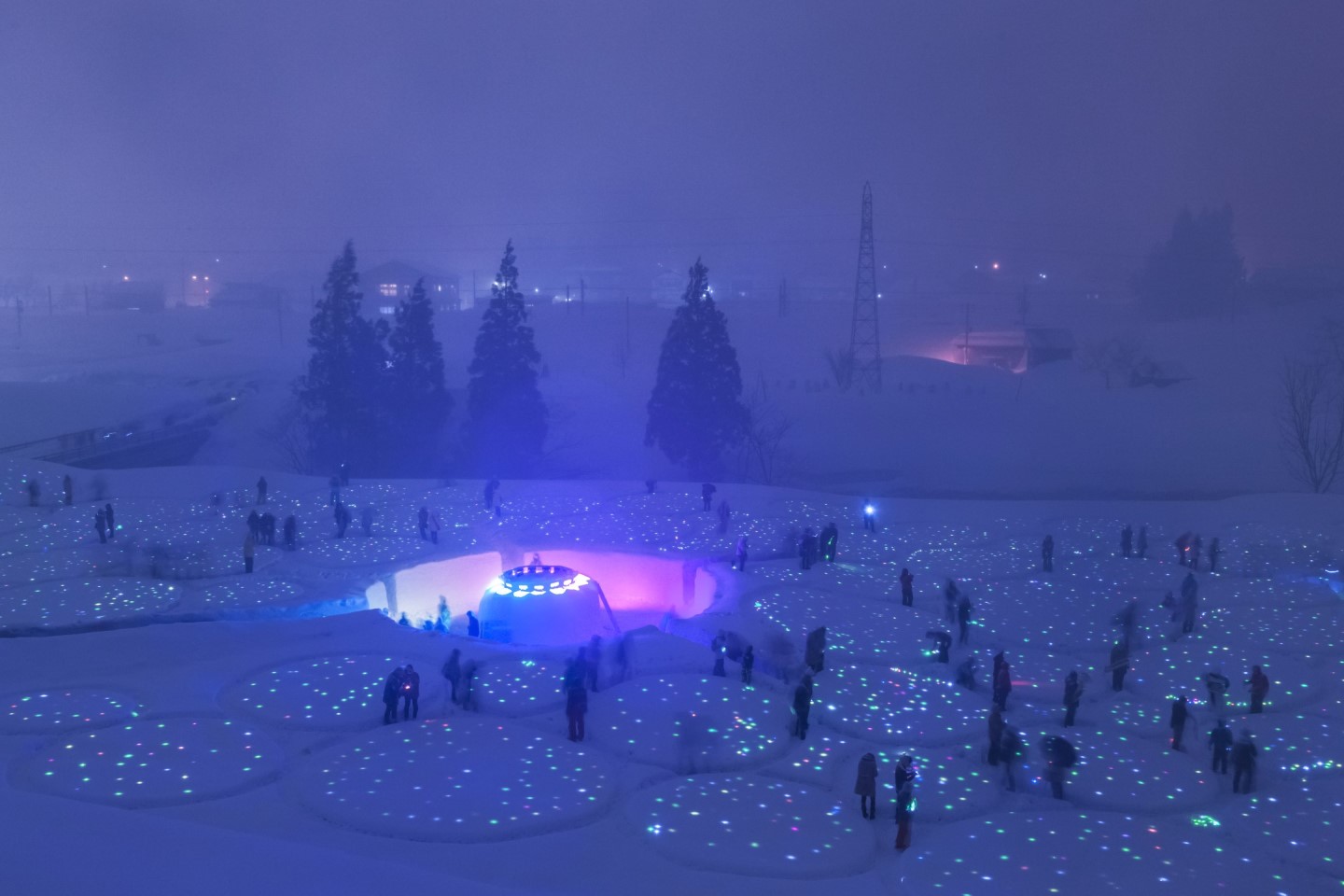
Echigo-Tsumari Snow Art Project 2013 (2 Mar 2013) Photo by Nakamura Osamu
Q. Please tell us episode which left an impression as you look back ten years.
I must be waiting for that moment every year.
This flower field of light deals with nature and thus it depends on the weather condition of each year. There was a winter with less snow and we were hit hard by snow storm in another winter. The flowerbed we created with great effort were covered under snow overnight. I was very anxcious for an obvious reason then. It has been a good ten-years of leaning how to work with nature or I may say, learn how to give up in a sense as needed. I had no choice but to accept the weather. I learnt how to move on after accepting such situation itself is the activity of humans. Whenever we face challenges, we worked together with volunteers and local people and coped with crises. It was so important to have people who were all keen to make it happen no matter how hard it would be.
I believe I would have given up if I was alone as an artist. I felt supported and everyone pushed my back. I grately appreciate it.
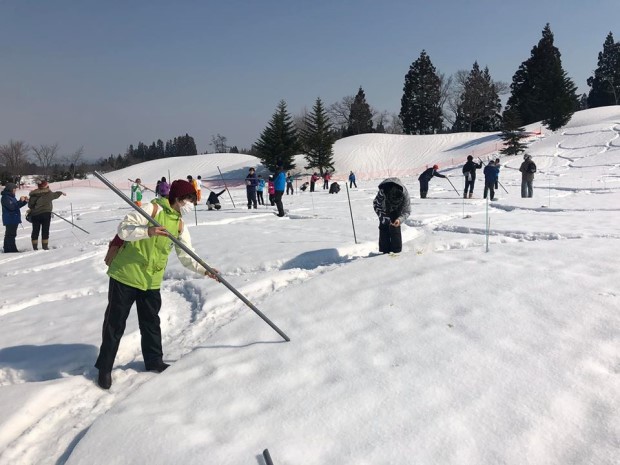
On the day of the event, volunteers plant seed of light one by one along circle lines drawn on the snow field.
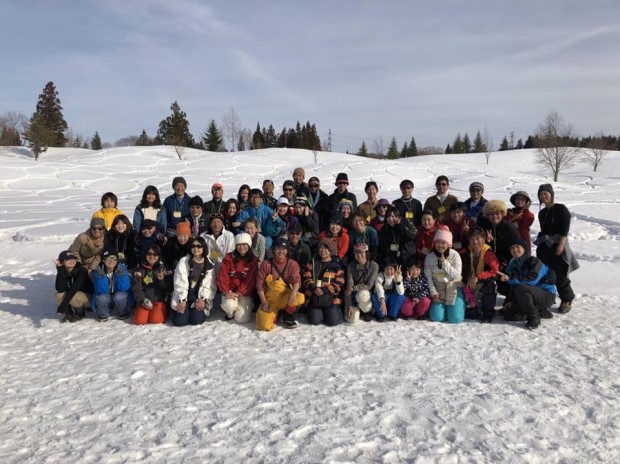
A group photo with all the volunteers
I was also impressed with the performance by snow throwers. The local old guys were so cool. They looked so proud of shooting snow. I look forward to meeting with volunteers who come and help every year. Everyone has got ten years older. The first year students at university then have now been working but they arrange their schedule to help the event. Although we don’t usually see each other, it is such a pleasure to see them again every year when making the flower field of light.
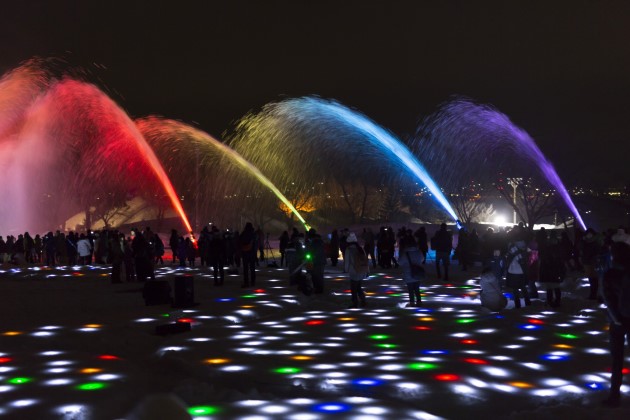
Echigo-Tsumari Snow Fireworks / Gift for Frozen Village 2015 (7 March 2015 at Nakago Green Park) Photo by Nakamura Osamu
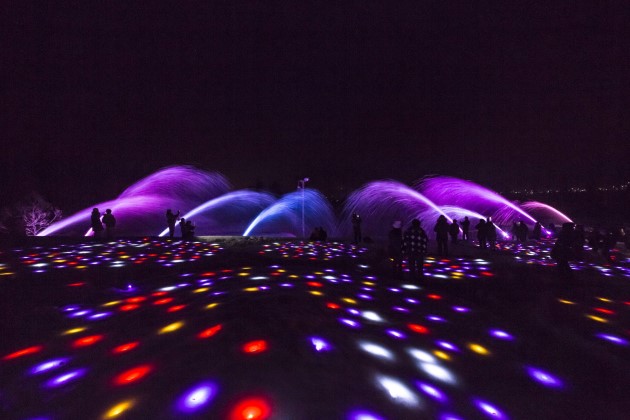
Echigo-Tsumari Snow Fireworks / Gift for Frozen Village 2016 (5 March 2016 at Nakago Green Park) Photo by Nakamura Osamu
Q. Can you tell us about your feelings as you enter the 10th year?
“Gift for Frozen Village” and “Flower field of light” began at Matsudai Nohbutai and expanded the number of seeds to plant from 10,000 to 20,000 and then to 30,ooo as we changed the venue to Nakago Green Park and to Belnatio. However, nothing has changed at all in regard to “bringing spring to the locals”. Being unchanged is marvellous! I feel like it has become more than just an event.
Usually any event is expected to be updated. It must be filled with pizazz as an entertainment in order not to loose audience (grinning). As I have also worked on such projects I can tell that “Gift for Frozen Village” and “Flower field of light” are fundamentally different. They have evolved in good sense and I wish it continues to be like this.

A light installation inviting visitors to the venue of Snow Fireworks (2014) ©Kyota Takahashi
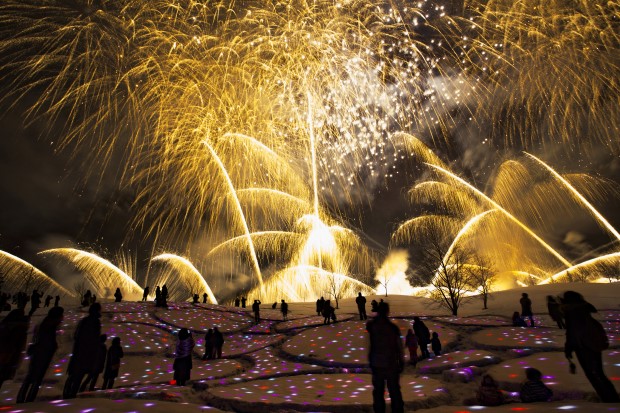
Gift for Frozen Village 2018 (3 March 2018 at Atema Gogen Resort Belnatio) Photo by Yanagi Ayumi
It may be like cherry blossoms. I like looking at cherry blossoms every year along the Kamogawa River in Kyoto, close to where I live. What a bliss to be able to see them again this year with my family and I hope we can come back to see them next year. It is so wonderful if this art event has become something of that sort. The another thing to note is that the work is created with lots of volunteers and local people. That is why it is not consumed. People can see who is making. There is no relationship between the artist and audience – what exits is the joy of seeing the flower field again and the gratitude towards those who are engaged with making. Recently I come to think that while it is important for the artist to make something, it is equally significant with whom you make something.
I sincerely feel pleased that I have engaged with people in Echigo-Tsumari for the last ten year.
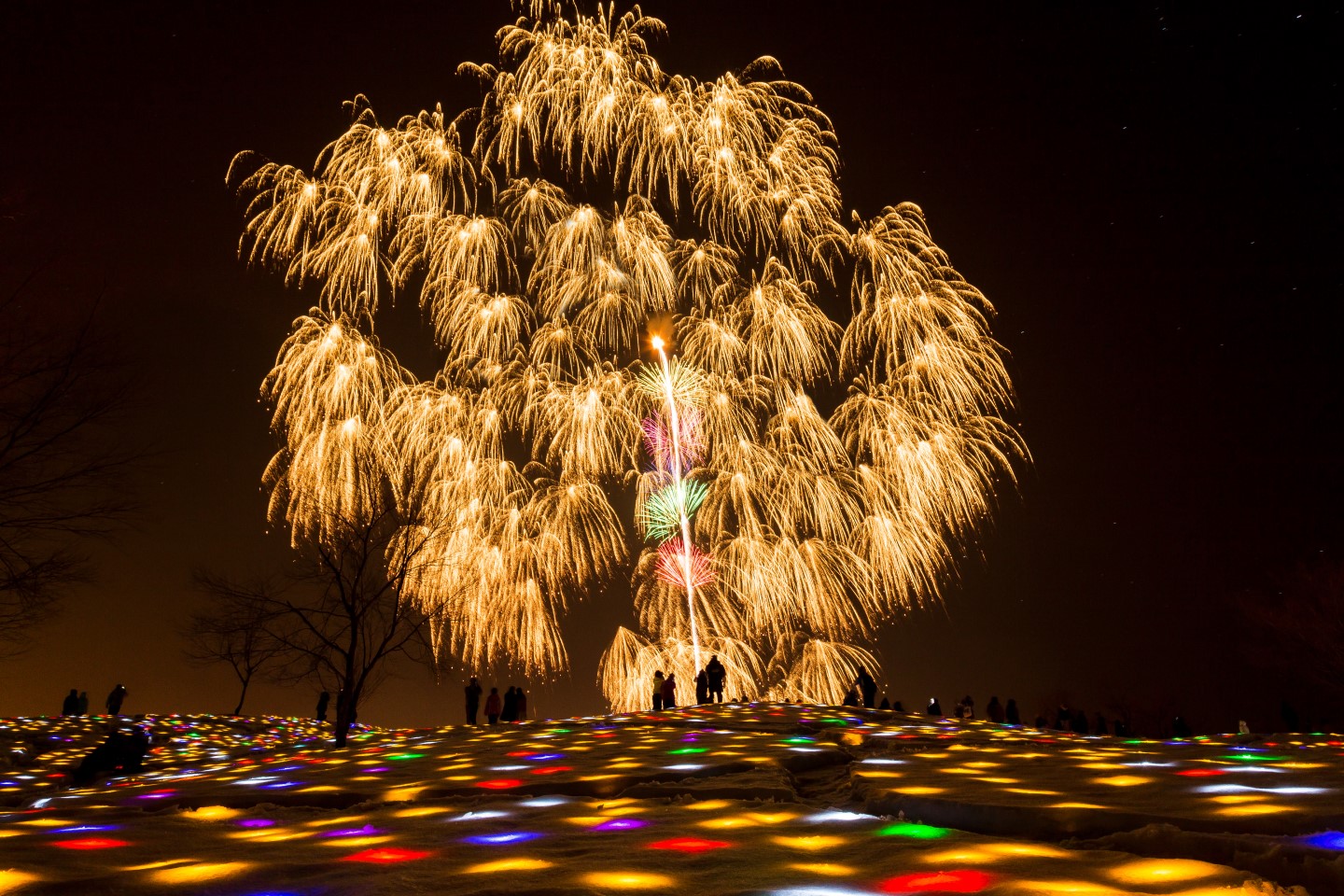
Gift for Frozen Village 2019 (1 March 2019 at Atema Gogen Resort Belnatio) Photo by Yanagi Ayumi
プロフィール

TAKAHASHI Kyota
Born in 1970 in Kyoto. Graduated from the Graduate School of Arts, specialising in the sculpture at Kyoto City University of Arts in 1995. He has produced and presented large-scale lighting installations by projecting light and images onto the outside spaces such as Light-up celebrating 100-years of Tokyo station, Kyoto Nijo Castle, and Towada Art Centre. He has also run participatory art projects engaging many people such as “Gift for Frozen Village” at Echigo-Tsumari.
“HIKARIORI -Weaving the Lights” by TAKAHASHI Kyota (at Echigo Tsumari Cultural Hall (Danjuro))
A work of light lighting up about 110 meter-long eaves of Echigo Tsumari Cultural Hall which resembles covered alley. By layering different colours representing four seasons of Echigo-Tsumari with local textiles such as Tokamachi-yuzen, the artwork portrays the nature and culture of the region through thin thread-like light. The programs of light alter every month to capture the feeling of changing seasons.
photo by Nakamura Osamu







